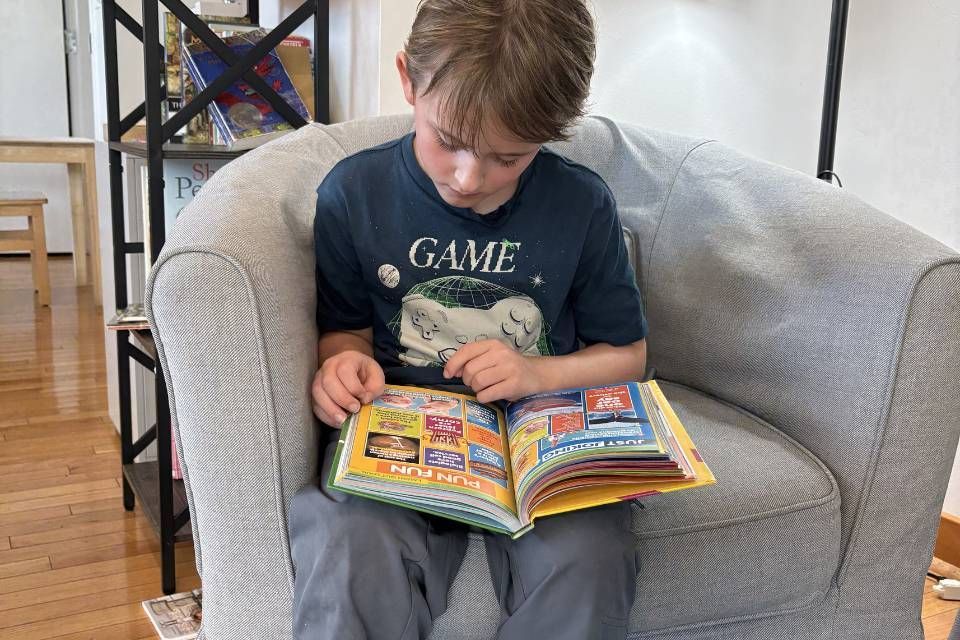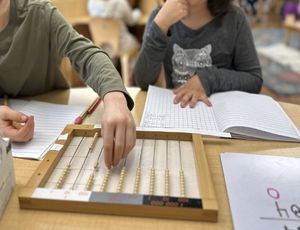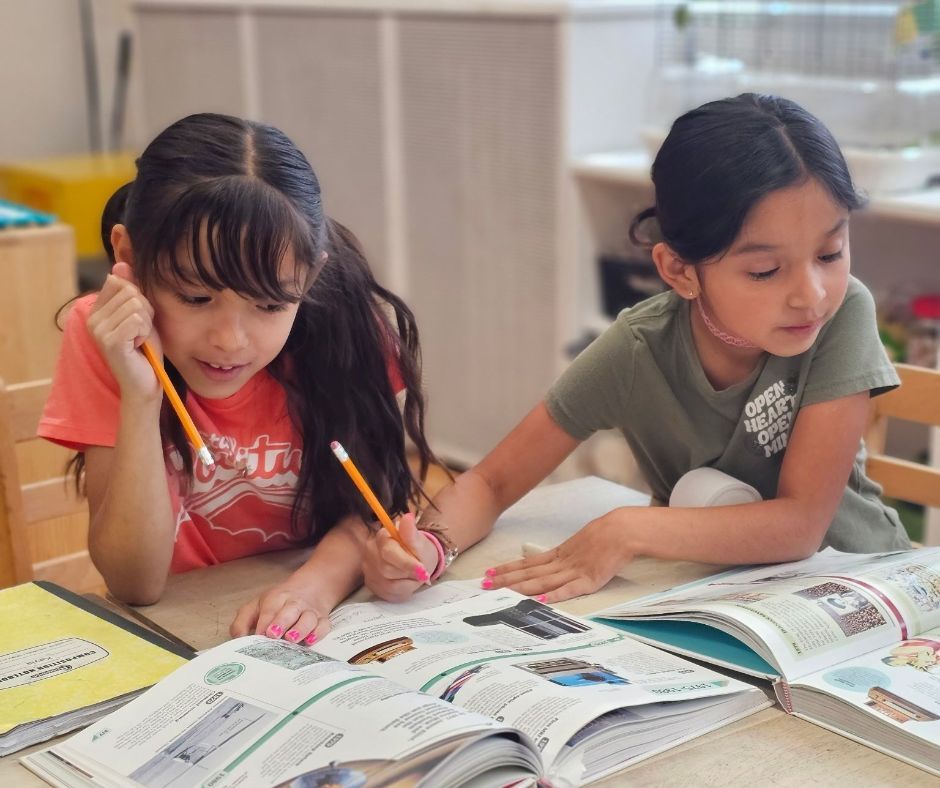
In Montessori, we recognize the importance of children being immersed in the wonders of the natural world. We want nature to be an integral part of daily life, rich in experiences that awaken curiosity and inspire awe.
Whether it’s watching ants march across a sidewalk, wondering at the shape of a cloud, or marveling at a tree's branches reaching across the sky, nature has a way of capturing children’s imaginations. Our goal is to help them see the natural world not just as a backdrop for play, but as a living, breathing system of which they are a part.
Children are often drawn to books that reflect the magic they sense outdoors. To support that connection, we’re sharing some of our favorite nature-based book series—beautifully written and illustrated titles that encourage exploration, observation, and a lifelong relationship with the natural world.
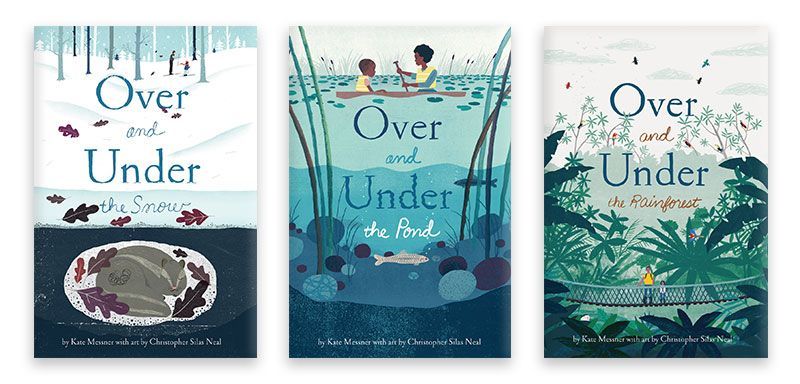
By Kate Messner with art by Christopher Silas Neal
These picture books will appeal to the youngest children, while also serving as an invitation for older children to explore. With illustrations that open windows to how we perceive the natural world, the books offer readers a glimpse into what we can discover if we look a little more closely. Whether we lift our gaze or peer deep down into the depths, there are wonders waiting to be revealed. The storyline of each book takes us on a child’s journey, with the security of a loving adult as a companion.
Messner, a former teacher, also includes descriptions of each animal at the end of the book, as well as additional resources for those who want to learn more about the ecosystem she has highlighted. Depending upon upcoming excursions or current interests, you and your child can explore the following titles:
Up in the Garden and Down in the Dirt
Over and Under the Canyon
Over and Under the Pond
Over and Under the Rainforest
Over and Under the Snow
Over and Under the Waves
Over and Under the Wetland
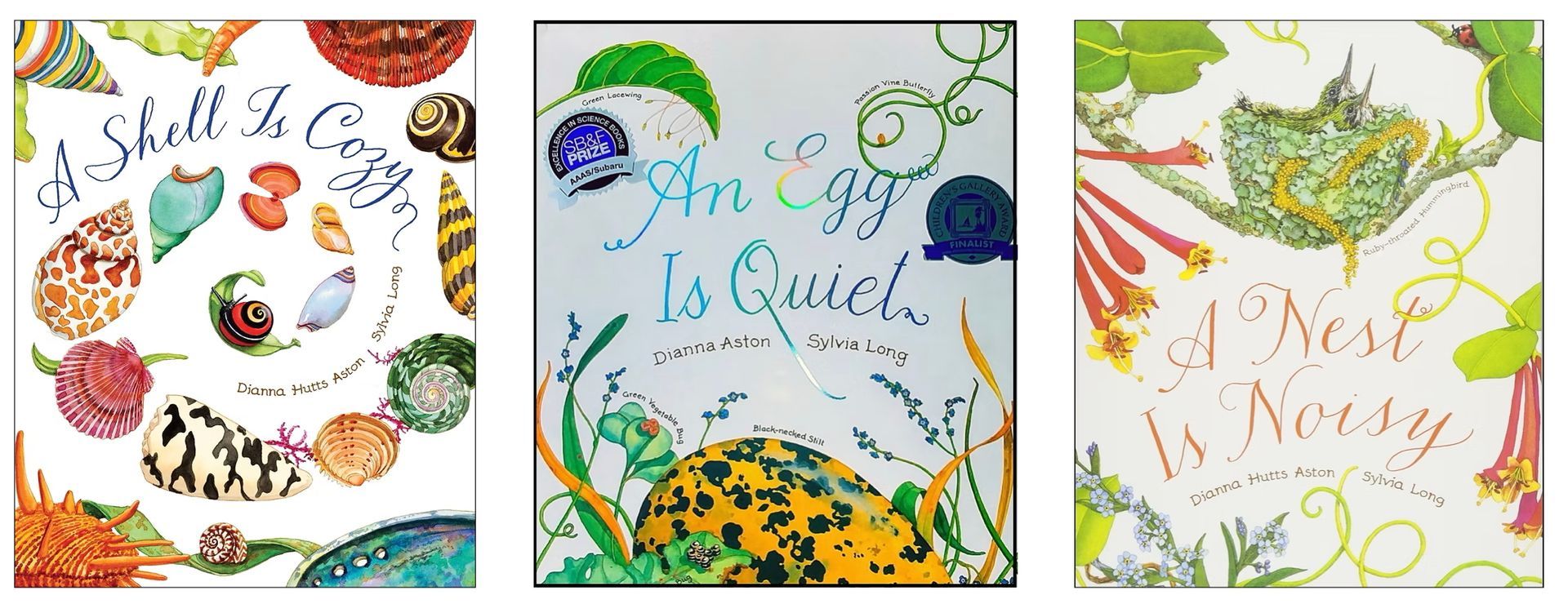
By Dianna Aston, Illustrated by Sylvia Long
One of the many beautiful features of these picture books is that they can be as simple or as complex as the reader prefers. For our youngest children, it’s easy enough to read the short poetic sentences written in lovely script across the page. For those who want more details, we can delve into fascinating facts and labeled illustrations. The detailed paintings share the splendor of the natural world as well as biological information that captures the imagination. Each of these titles is an invitation to awe:
A Beetle Is Shy
A Butterfly Is Patient
An Egg Is Quiet
A Nest Is Noisy
A Rock Is Lively
A Seed Is Sleepy
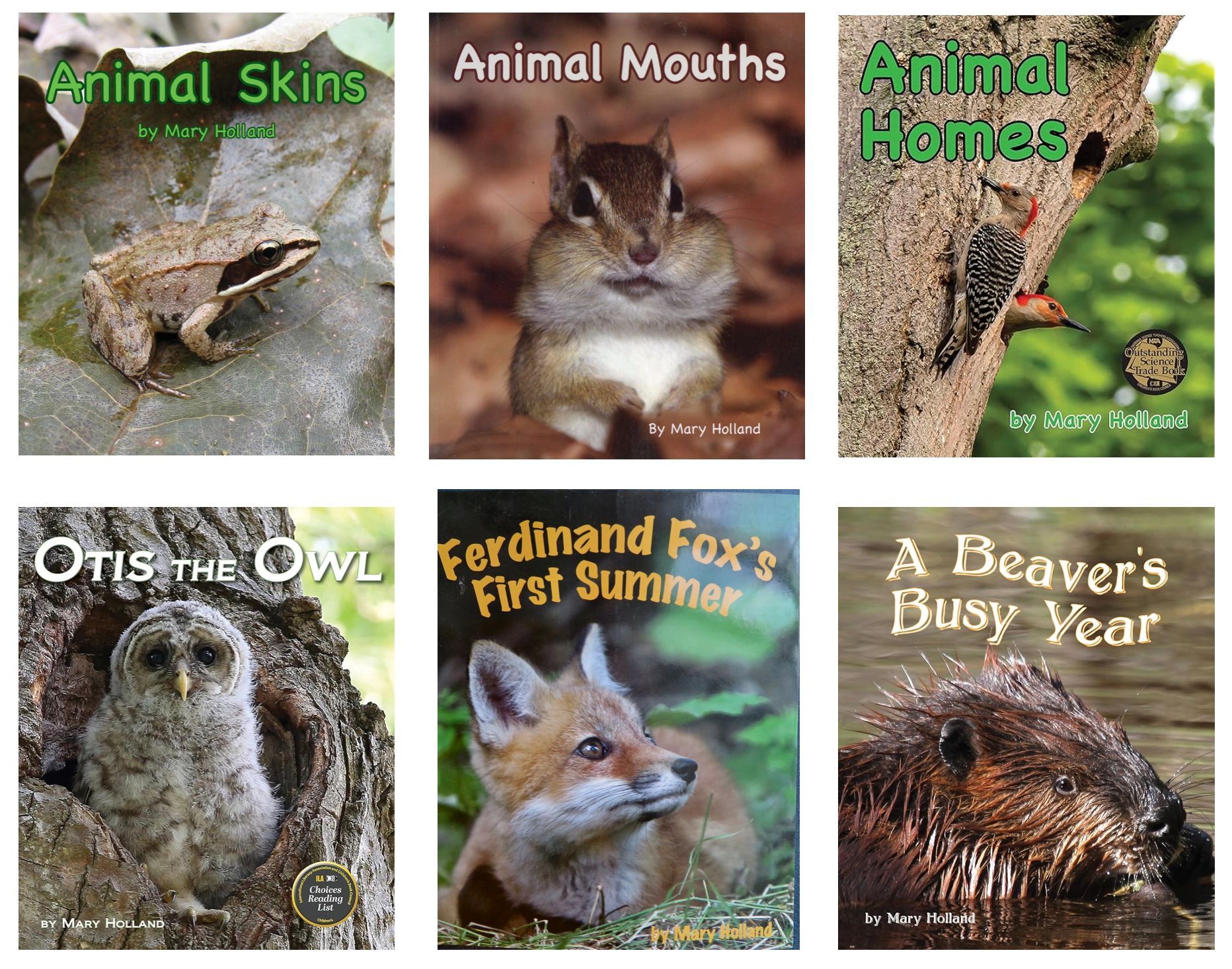
The photographs in Mary Holland’s books bring us close up to the animal world. Crisp and full of detail, each page is immersive, both visually and factually. The books that focus on particular aspects of animals (ears, eyes, legs, etc.) weave together rich information with engaging commentary and questions (“Can you do that?” -or- “Can you find…?”).
The books that detail a particular animal, such as Ferdinand Fox’s First Summer and Otis the Owl, take us on a seasonal journey through the lens of that animal’s life. Each title also ends with activities, called “For Creative Minds,” for further exploration. Animal lovers will lose themselves in these books!
With over 15 books to choose from, this collection can provide days and weeks of exploration. For those who really fall in love with this series, it’s worth investing in Naturally Curious Day by Day: A Photographic Field Guide and Daily Visit to the Forests, Fields, and Wetlands of Eastern North America, which offers information about the natural world for each day of the year.
Holland’s picture book titles include:
Animal Ears
Animal Eyes
Animal Homes
Animal Legs
Animal Mouths
Animal Myths
Animal Noses
Animal Skins
Animal Tails
Animal Tracks and Traces
The Beavers' Busy Year
Ferdinand Fox’s First Summer
Otis the Owl
What’s Inside?
Yodel the Yearling
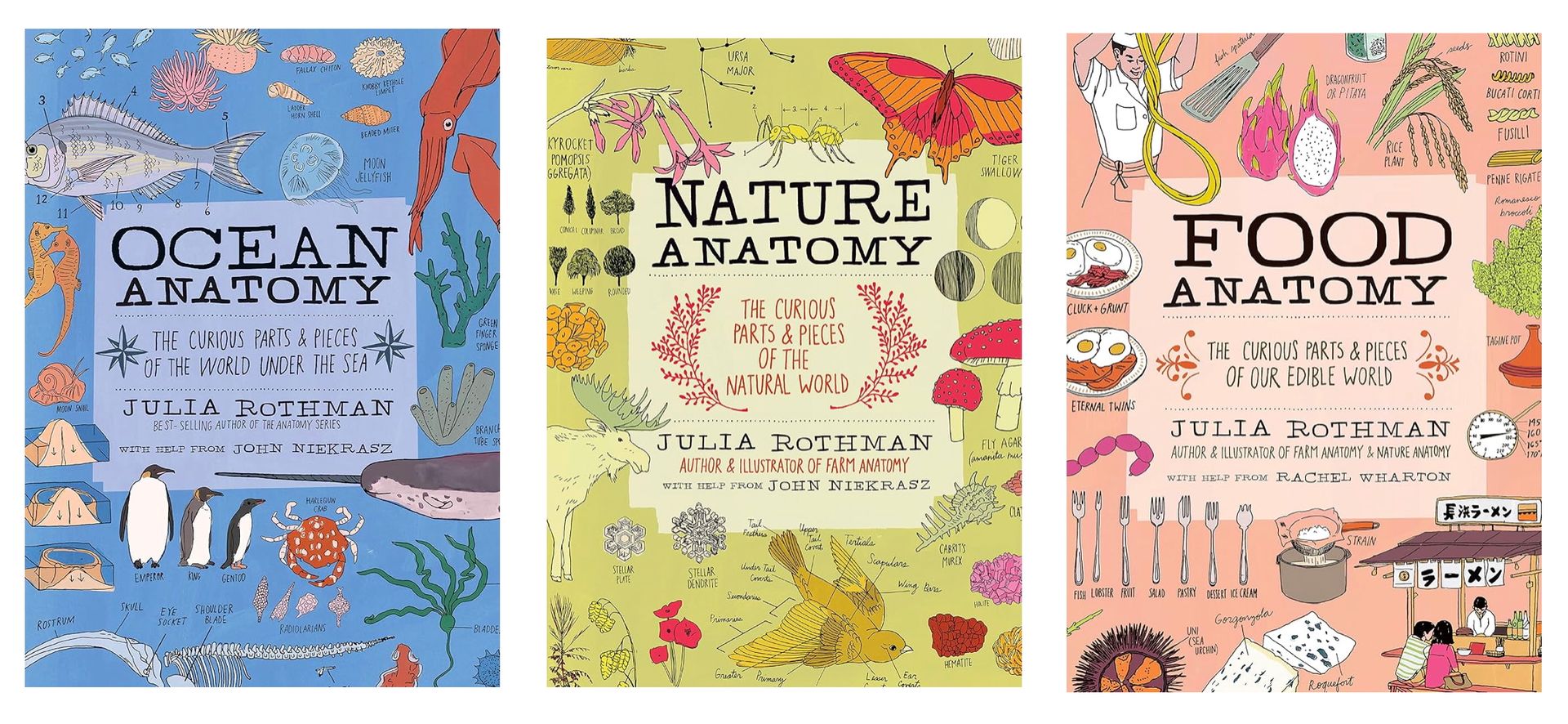
Written and Illustrated by Julia Rothman
Perhaps more suited for older readers, these books are a treasure trove of information. Easy enough to flip through to discover captivating details, and well worth moving through the thematic chapters, the pages offer sweet illustrations, short descriptions, labeled anatomy, and much more.
Rothman’s delightful drawings offer just enough detail without being too much, making them accessible yet engaging. If anything, these books are a great introduction to what nature journaling can be! If children are inspired to try their hand at nature journaling, Claire Walker Leslie’s books, especially Keeping a Nature Journal: Deepen Your Connection with the Natural World All Around You, can be another wonderful option to explore with your child!
The five Rothman “Anatomy” books are:
Food Anatomy: The Curious Parts & Pieces of our Edible World
Wildlife Anatomy: The Curious Lives & Features of Wild Animals Around the World
Farm Anatomy: The Curious Parts & Pieces of Country Life
Nature Anatomy: The Curious Parts & Pieces of the Natural World
Ocean Anatomy: The Curious Parts & Pieces of the World Under the Sea
Whether they’re flipping through pages while curled up on the couch or stepping outside to explore with new eyes, these texts and illustrations can help children cultivate a lasting relationship with nature. We hope these books offer a meaningful bridge between your child and the natural world—one that inspires closer observation, deeper questions, and joyful discovery.
In Montessori, we believe that fostering a love for the natural world lays the foundation for stewardship, empathy, and wonder. These books are just a starting point—an invitation to see more, learn more, and care more about the life that surrounds us every day. Please reach out to let us know what you think of these books or to recommend others. Happy reading, and happy exploring!

